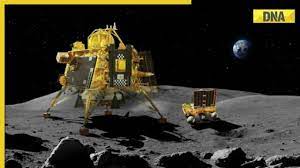On Wednesday, ISRO successfully landed a spacecraft on the Moon’s south pole. The mission is being hailed as one of India’s greatest achievements in a hall of fame dominated by the United States, Russia, and, more recently, China.
The Chandrayaan-3 project, which includes the Vikram lander and the Pragyan rover, will increase India’s understanding of lunar ice, which is regarded as one of the most promising and valuable resources discovered on the Moon to date. But, before we get to the ice on the moon, consider what makes a lunar pole landing such a noteworthy feat in the space race.

The race to the South Pole of the Moon
It is also a sign of India’s rising space ambitions. With its numerous craters and deep pits, the lunar south pole is a difficult landing location. It is distant from the equatorial landing site used by earlier space missions.
Days before Chandrayaan-3, Russia’s Luna-25 attempted to land but failed and crashed after spinning out of control on final approach. Following India’s landing, both China and the United States plan expeditions to the Moon’s south pole.
Since the 1960s, scientists have hypothesized about the presence of water on the moon’s surface, but the first samples returned by Apollo missions were dry. In 2008, a new method discovered minute hydrogen presence inside volcanic glass in the same samples.
After Chandrayaan-1 carried a NASA instrument that identified water on the Moon’s surface in 2009, ISRO entered the picture. A NASA probe then ventured to the lunar south pole, where it discovered ice beneath the surface. Another NASA mission discovered indications of frozen water in high concentrations in shadowed craters on the Moon’s south pole.
What is moon ice so valuable?
Both governments and private groups value the water found on the Moon. These areas of old frozen water could provide evidence of Moon volcanoes and debris transported to Earth by comets and asteroids. It may provide an explanation for why we have oceans.
Due to the abundance of lunar ice, humanity may be able to utilise it as possible drinking water for future moon trips. It could be used to cool and extend the life of lunar equipment. It can also be decomposed to produce hydrogen for fuel and oxygen for human breathing. These could be significant milestones toward future manned expeditions to Mars and lunar mining.
